Germany look like strong contenders to win EURO 2024 following a strong start to the competition as the host nation. A 5-1 battering of Scotland set the tone for an exciting and high-scoring competition before a 2-0 victory over Hungary sealed their spot in the knockout stage and triggered an extension to the manager’s contract until the end of the upcoming 2026 World Cup.
Prior to the competition starting, I spent some time speaking with coach Antonio Luigi Guglielmi to analyse some of the teams taking part in the Euros to better understand what to expect in the coming weeks. When we came across Germany, it was immediately clear that there was a strategy focused on each player zonally defending space as high as possible to prevent opponents from being able to arrive in higher value areas and simultaneously leaving the defensive line until as late as possible, trying to catch opponents offside. Since Julian Nagelsmann took charge near the start of the season, just gone, there were under twenty free kicks they had faced in crossing situations at that point, but Germany conceded numerous chances that signalled alarm bells before the tournament even began.
Fast forward two weeks, the only goal Germany conceded came from a wide free kick, and another scare occurred in their game against Hungary, where they again conceded after a free kick, but this time, their high line did catch the opponent offside.
In this tactical analysis, we will delve into the tactics behind Germany‘s defensive system when dealing with free kicks, with an in-depth analysis of the details behind the different aspects of their defensive system. This set-piece analysis will also explore the various ways in which their high and late movement of the line has been exploited so far and how other teams at the Euros could attack and defeat a seemingly impenetrable German side.
Approach to Defending Free Kicks
We can see that the height of Germany’s defensive line is situated along the edge of the penalty area when defending free kicks. When the free kick is within 25~ yards of the goal, the line drops a few steps but still is relatively high. This is fairly common amongst most teams, but what makes Germany stand out and potentially vulnerable is the timing of when the players move to cover the space behind them. Germany’s line only retreats back to goal just as the taker is about to strike the ball, as seen in the image below.
The late movement back towards goal, as with other elements of Germany’s free-kick defense, is a risk vs reward strategy.
Reward – Catch opponents offside by holding the height of the line/Prevent opponents from arriving in high-value areas
Risk – Leaves a lot of space for opponents to attack if the timing is right
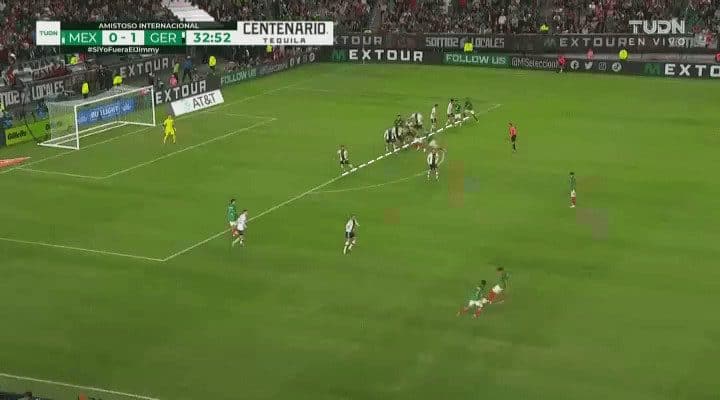
Usually, the line drops slightly earlier, which means that when opponents are overly eager and attack the space early, forgetting about Germany’s style, they are likely to be caught offside. Because of that, attackers must hold their runs until slightly later, which means they are only able to reach the spaces just outside the six-yard box by the time the ball arrives.
However, the amount of space that is left open is vast and can often be accessed, and the outswinging delivery should be used against Germany’s system to exploit that space as well as provide the attacker with an easier chance of connecting with the ball with added power, which might be required with the shot being made from slightly further out.
We can see in the example below that through pure differences in acceleration, the Mexican attacker is able to reach the open space quicker than the German defenders, with both players beginning the run when the ball is kicked and the German players not making that movement early and giving the opponents an equal chance at a 10-yard sprint.
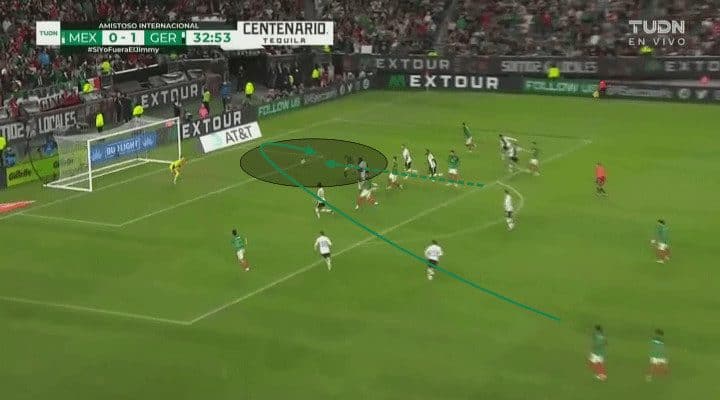
When the opponents deliver the ball and take advantage of the space, depending on the angle at the point of contact, players will either shoot on goal or flick the ball across for a second-phase opportunity. When the ball is put across the face of the goal, İlkay Gündoğan’s role in tracking the player’s attacking the near post originally is key. There have been numerous occasions where the ball was headed across the face of the goal, and the Barcelona player stayed alert by moving back to his goal even though the ball was nowhere near him, and he kept checking his shoulder to be aware of the attacker’s movements. This allows him to react first to second-phase opportunities and reduce the damage dealt to the German high, late line.
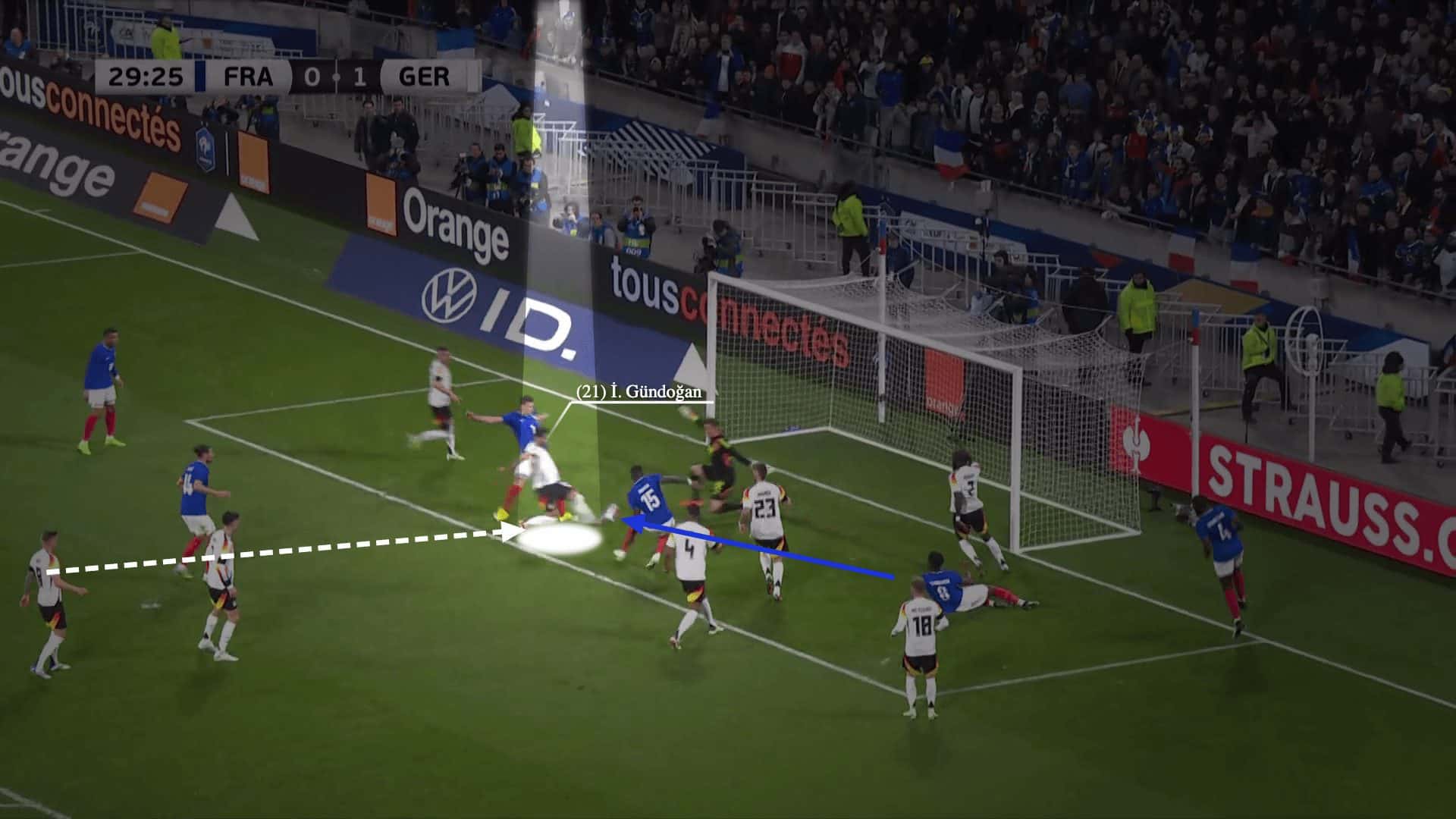
Another aspect of Germany’s system is the position and width of the defensive line. In the image below, we can see that the defensive line starts just outside of the far post and uses a zonal-oriented system where each player tries to cover the space behind.
Reward – Compact unit forces runs to be made around the block/Attackers have to look away from the ball to find spaces to attack
Risk – Leaves space in central areas for opponents to attack
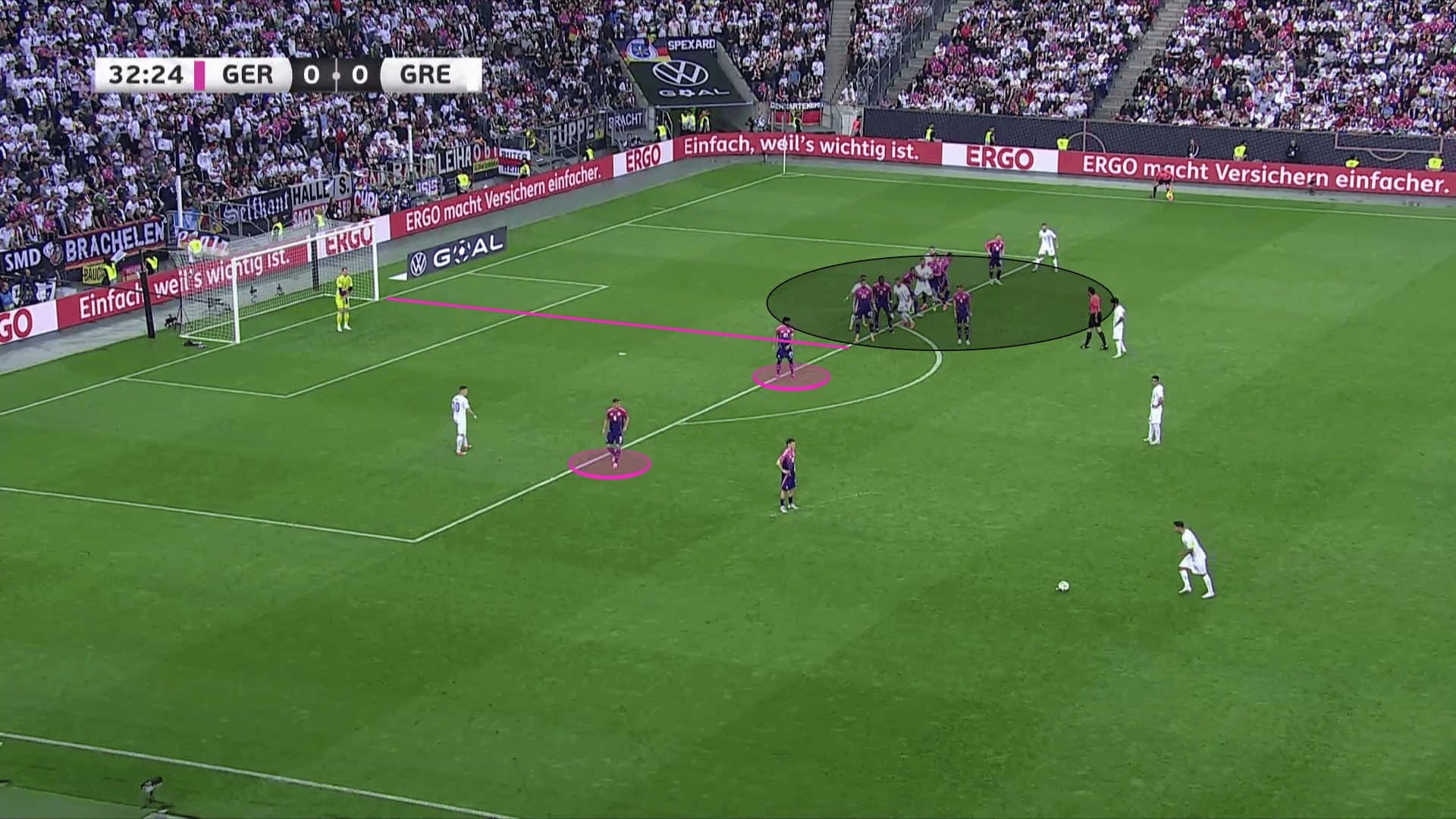
The issue with having one central presence in the width of the goal to protect that space is the threat of being underloaded. As we can see in the image below, in the EURO 2024 opener against Scotland, Austin MacPhee, who is Aston Villa‘s set-play puppet master, recognises this vulnerability and sets Scotland up to attack that space. Two Scottish players attack the space, with the nearer runner dragging the only defender away from that area, with the second player making the first contact and flicking the ball into a more dangerous area.
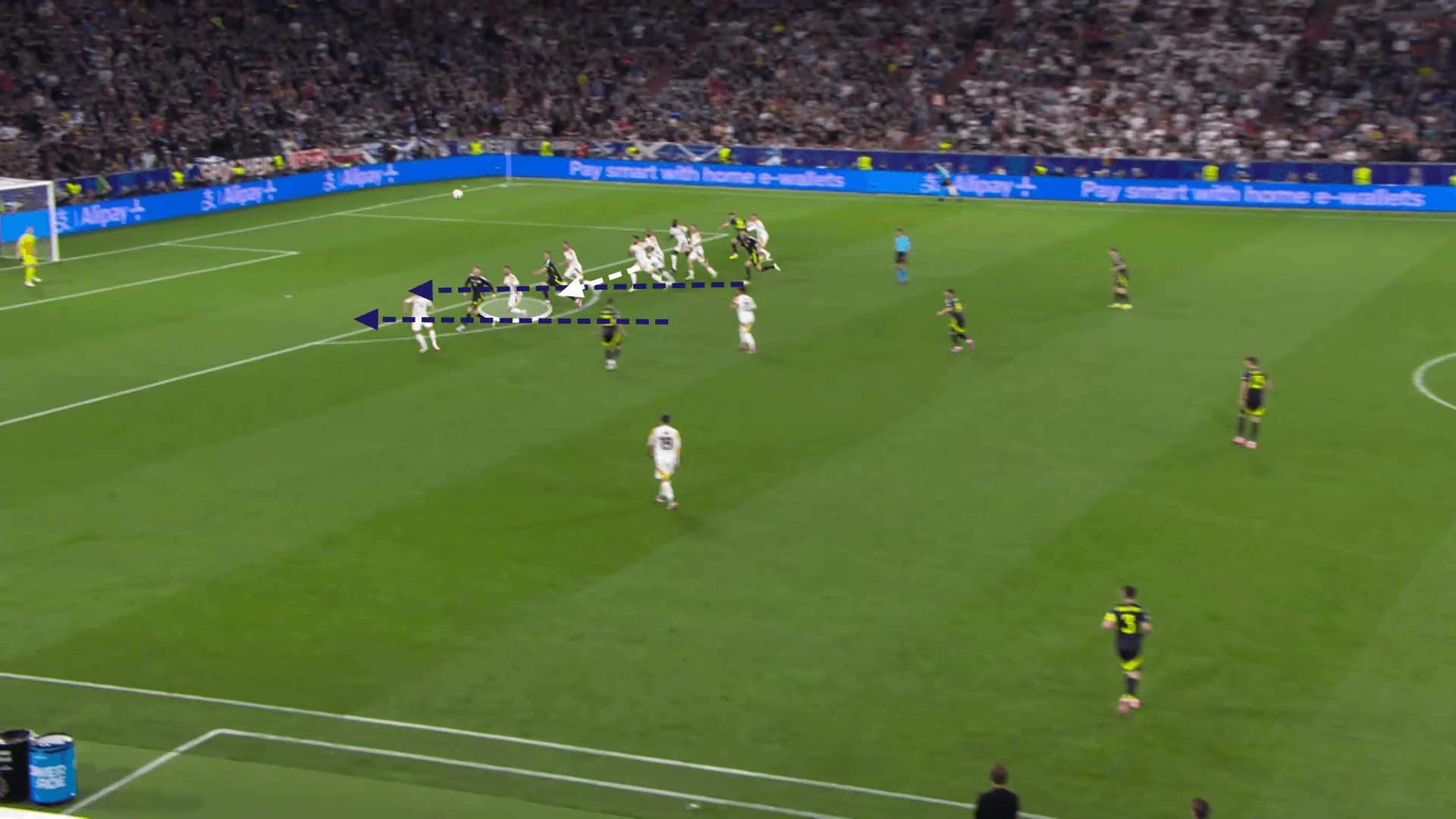
The closer the ball is to the goal, the deeper and narrower the defensive line becomes. We can see that as the French player is about to deliver the ball into the box, the German players are focused on preventing any gaps from opening up and forcing the French attackers to be in front of them or to attack the space by moving around the outside of the defensive units. This reduces the chances of any individual being able to arrive in the space behind the defensive line. However, if someone does arrive in that space, none of the German defenders are prepared to cover that space, with them all having their backs turned and the priority being denying giving the opposition access to the high-value area at the six-yard line.
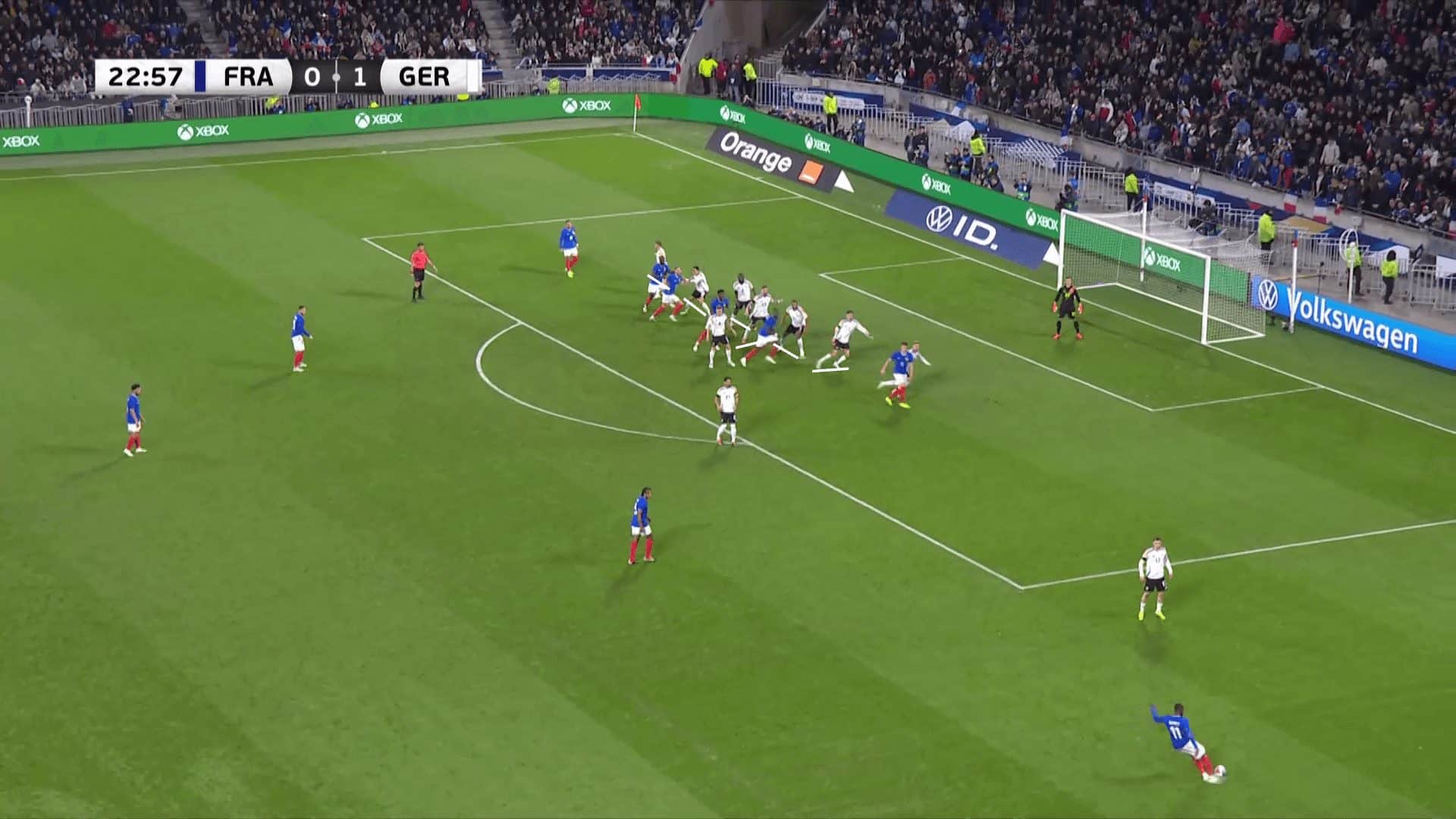
Two issues arise with this zonal system, which tries to make accessing the high-value areas as difficult as possible.
Firstly, there is no room for error. One mistake, one hole in a sponge, and the water will flow straight through rather than being caught by the defensive line. The zonal system comprises six players, meaning that some of the attacking and midfield players may have to join the defensive unit. As a result, they might be weaker in their duels, meaning that, like in the case with Musiala captured below, rather than staying strong and preventing his opponent from getting goalside, his defensive movement lets him down and allows the French attacker to bypass him and attack the ball. The likes of Andrich and Havertz should make this tougher for opponents now, but with the deeper free kicks where almost every player must help defensively, there runs a risk of someone like Musiala being overpowered by the opposition during set plays.
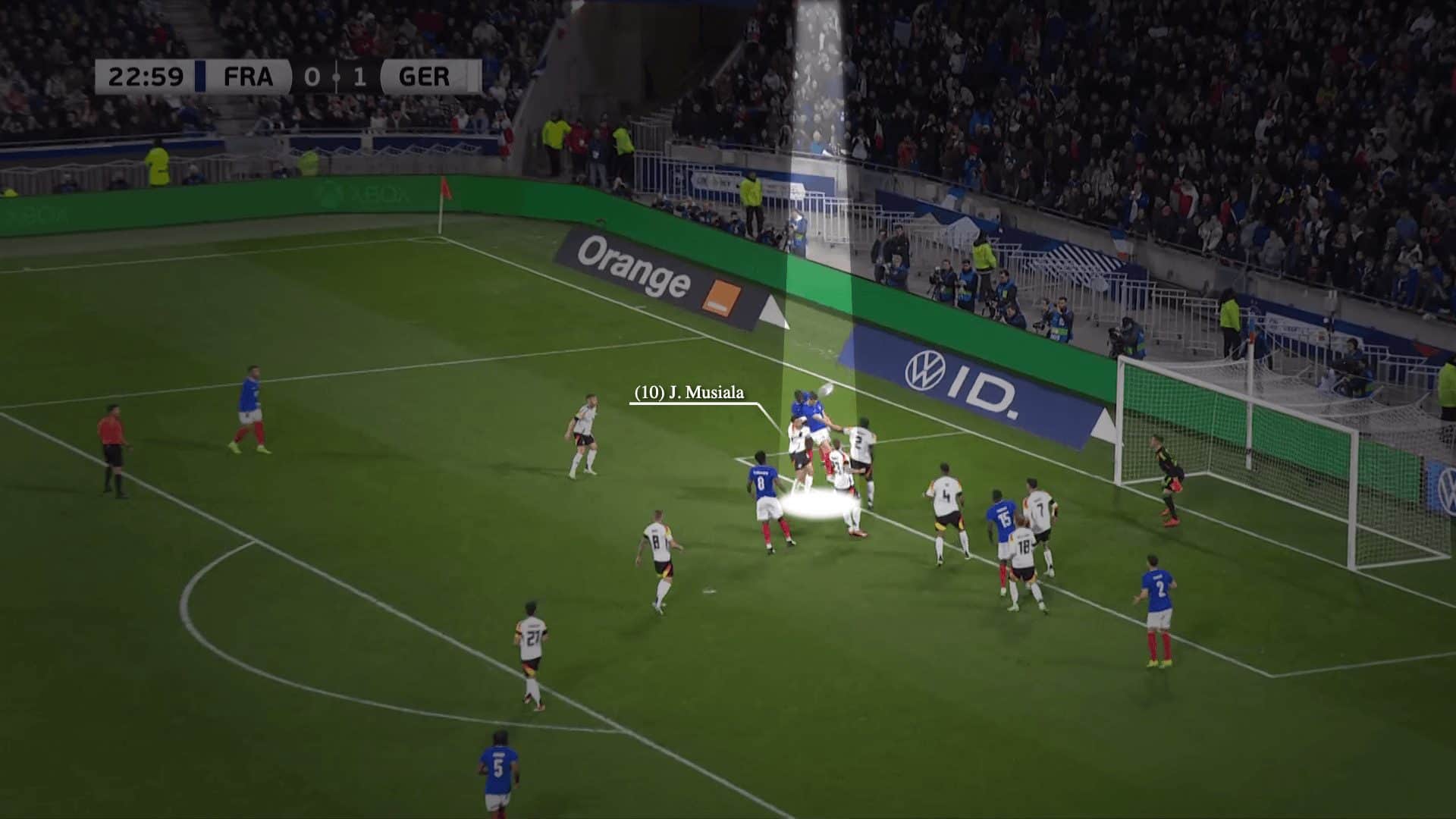
The second problem of Germany’s zonal system is the fact that it is vulnerable to being overloaded. We alluded to this earlier with the runs targeting the isolated Gündoğan in the central space, but these overloads can target any part of Germany’s defensive unit. We can see at the far side of the pitch that the Dutch have a 3v2 overload, which they take advantage of with two Dutch players setting screens on the two nearest German defenders to the slightly deeper target player, starting on the edge of the penalty area. The two screens create an opening in the defensive line, giving the Dutch player a clear path to accessing a high-value area.
Furthermore, another tool used to exploit the space behind a line that retreats late is the use of a deep run, where the Dutch attacker can use the extra momentum to arrive in the space earlier than the static German defenders.
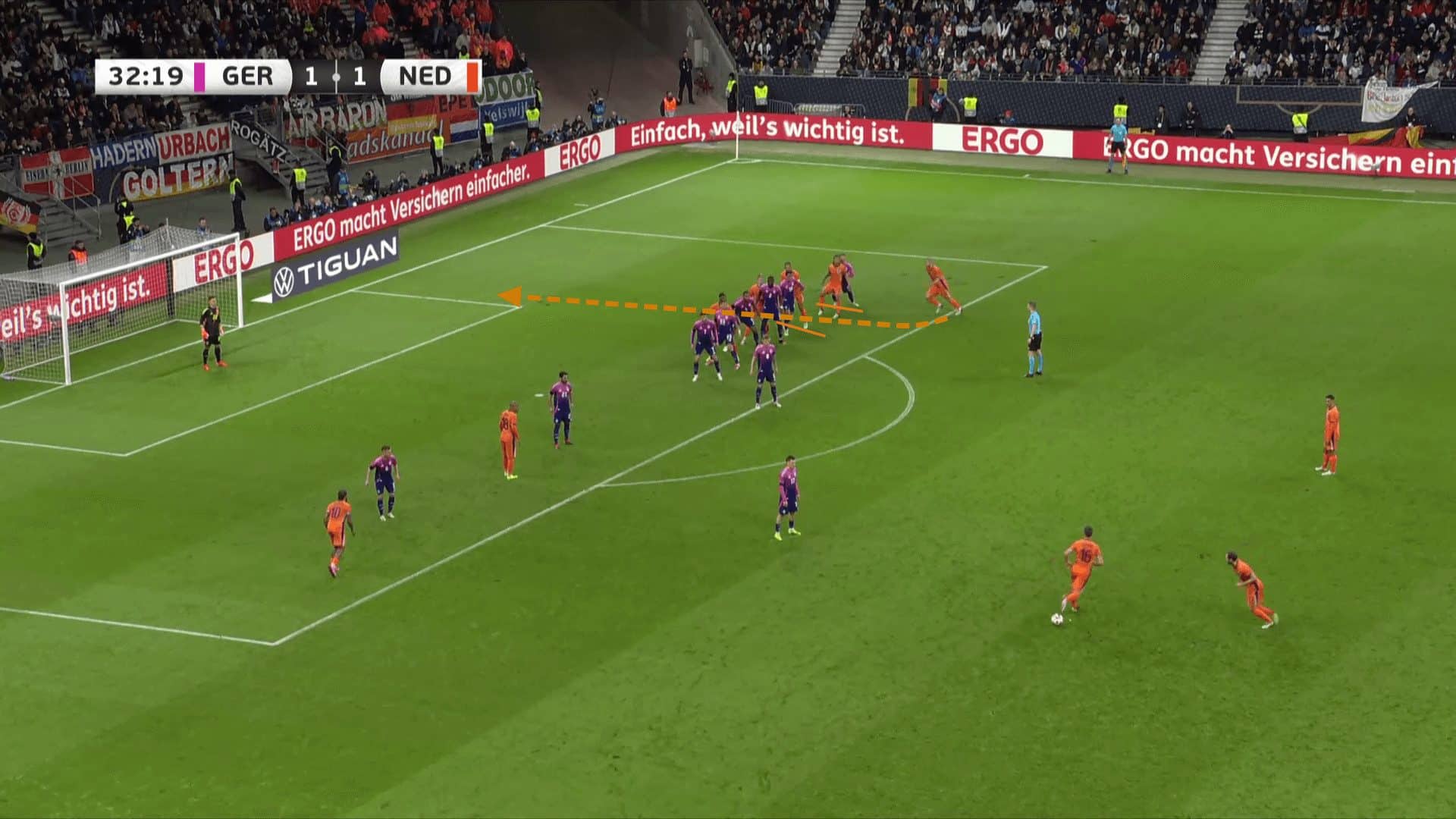
One other issue that Germany could face when attempting to maintain the height of the line until as late as possible is the threat of one of the German players moving the line back for everyone else. This could happen through a mistake in timing from one of the players when moving back, or it could be intentional from the opposition like Hungary did in the game two days ago. One player uses his body to force the German defender back to his own goal and play the rest of the team onside.
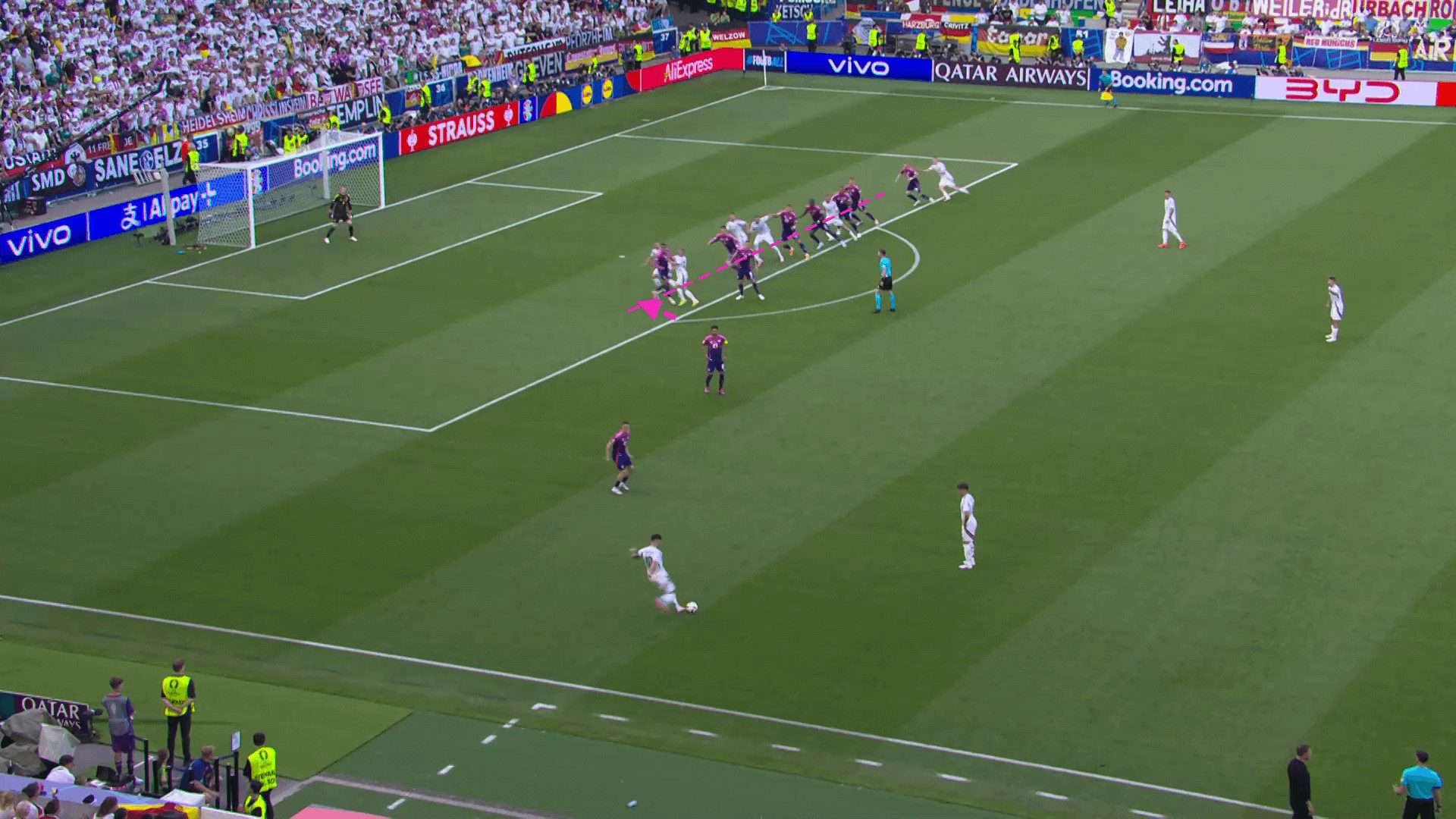
Summary
Although the only goal Germany have conceded thus far has been quite unfortunate, the reasons detailed in this tactical analysis show that marginal factors increased the chance of that goal occurring. Their high line, combined with the late retreat back to cover the space, is a rather risky strategy, which so far has been exploited fairly regularly in the limited opportunities they have faced since Nagelsmann’s appointment.
Germany undoubtedly are one of the likeliest teams to win the competition, but the approach to defending free kicks and trying to catch opponents offside is something that hasn’t provided the same level of success as other aspects of the ex-Bayern manager’s game plan. It will be interesting to see if other nations catch on and attempt to attack Germany’s Achilles’ heel.






Comments